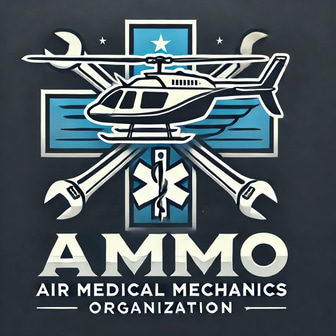Disclaimer: The information provided is for general informational and educational purposes only. Nothing contained herein shall be construed as guidance for, or a basis of, compliance of any regulatory or certification standards. This information must not be used as the sole basis for the certification, inspection, repair, modification, or return to service of any aircraft, product, or component. Users are responsible for consulting appropriate, approved technical data, regulatory authorities, before performing any maintenance, modification, or return-to-service actions.
Aircraft Interior Guidance
Code of Federal Regulations (CFR) – Aircraft Interior Compliance
14 CFR 25.561 – Emergency Landing Conditions
Establishes structural requirements for aircraft interiors (e.g., seats, partitions, panels) to withstand emergency landing forces.14 CFR 25.562 – Dynamic Seat Testing
Specifies dynamic impact testing requirements for seat and restraint systems to ensure occupant protection in emergency landings.14 CFR 25.785 – Seat Belts & Restraints
Regulates the design, placement, and use of safety belts, harnesses, and seats in transport category aircraft for occupant protection.14 CFR 25.853 – Flammability Standards for Cabin Interiors
Defines flammability resistance requirements for cabin interior materials, including seats, partitions, walls, and ceilings.14 CFR 91.107 – Use of Seat Belts & Child Restraints
Mandates the use of seat belts and approved child restraint systems during aircraft movement, takeoff, and landing.
FAA ORDERS (Regulatory Policy for FAA Personnel)
FAA Orders provide the highest level of guidance for FAA personnel when certifying, evaluating, and approving aircraft interior configurations, seating systems, and material compliance.
FAA Order 8110.113
Approval of aircraft seat installations based on dynamic testing and occupant injury criteria.
14 CFR Reference: Part 25.562 (Dynamic testing of seats).
→ Defines injury criteria and structural integrity requirements for seating systems.FAA Order 8900.1, Vol. 4, Ch. 14, Sec. 14
Evaluation and approval of aircraft seats, interior panels, and systems.
14 CFR Reference: Parts 21, 23, 25, 27 (Certification and airworthiness requirements).
→ FAA procedures for evaluating seats, restraint systems, and compliance with interior flammability and crashworthiness standards.
ADVISORY CIRCULARS (FAA-Approved Methods for Compliance)
ACs provide acceptable methods for meeting FAA regulations regarding interior safety, crashworthiness, flammability, and seating systems.
Aircraft Seat and Occupant Protection
AC 25.562-1B
Dynamic testing requirements for transport category aircraft seat restraint systems.
14 CFR Reference: Part 25.562 (Crash safety for seats).
→ Specifies impact testing requirements for seat installations.AC 25.785-1B
Guidance for flight attendant seat and torso restraint system installations.
14 CFR Reference: Part 25.785 (Occupant safety and comfort).
→ Covers seat placement, restraint attachment, and injury criteria.AC 21-34
Approval of replacement and modification parts for aircraft seats and cabin interiors.
14 CFR Reference: Parts 21.303, 43, 25.561, 25.562.
→ Describes seat certification, structural integrity, and modification approvals.AC 91-65
Encouragement of shoulder harness use for passenger seating.
14 CFR Reference: Part 91.107 (Safety belt and shoulder harness regulations).
→ Recommends enhanced passenger restraint methods.
Flammability Standards for Interior Materials (Panels, Insulation, and Seating Materials)
AC 25.853-1
Flammability test methods for seat cushions and cabin interior materials.
14 CFR Reference: Part 25.853(a) (Flammability of cabin interior materials).
→ Mandates flame propagation resistance for seat cushions, panels, and interior finishes.AC 25.856-1
Fire safety requirements for thermal/acoustic insulation materials in aircraft.
14 CFR Reference: Part 25.856(a) (Insulation material flammability).
→ Describes how insulation should prevent flame spread in hidden areas.AC 25.856-2A
Flammability testing methods for thermal/acoustic insulation materials.
14 CFR Reference: Part 25.856(b) (Insulation material burn-through resistance).
→ Defines burn-through protection standards for insulation barriers.AC 20-56A
Electromagnetic interference (EMI) considerations for aircraft interior systems.
14 CFR Reference: Part 25.1353(b) (Electrical equipment flammability and protection).
→ Ensures safe integration of cabin electronics and lighting systems.
Cabin Safety and Crashworthiness
AC 25-17A
Cabin interiors crashworthiness handbook.
14 CFR References: Parts 25.561, 25.562, 25.785, 25.853.
→ Covers seat installations, emergency exit access, panel safety, and materials testing.AC 23.562-1
Dynamic testing for seats in small airplanes.
14 CFR Reference: Part 23.562 (Small aircraft seat crashworthiness).
→ Defines impact testing and safety requirements for non-transport category seats.AC 20-146A
Lightning protection for aircraft electrical and electronic systems.
14 CFR Reference: Parts 25.1316, 25.1353.
→ Ensures safe operation of cabin power, lighting, and in-seat electronics.
© 2024. All rights reserved.
Disclaimer: The information provided by the Air Medical Mechanics Organization (AMMO) is for general informational and educational purposes only. It has not been reviewed, approved, or accepted by the Federal Aviation Administration (FAA), any Organization Designation Authorization (ODA) holder, Type Certificate (TC) holder, Supplemental Type Certificate (STC) holder, or any aircraft or component manufacturer.
Nothing contained herein shall be construed as guidance for, or a basis of, compliance with FAA regulations, manufacturer-approved data, type certificate or supplemental type certificate requirements, or any other regulatory or certification standards. This information must not be used as the sole basis for the certification, inspection, repair, modification, or return to service of any aircraft, product, or component.
Users are responsible for consulting appropriate, approved technical data, regulatory authorities, and manufacturer guidelines before performing any maintenance, modification, or return-to-service actions. AMMO assumes no liability for the use or misuse of any information provided
